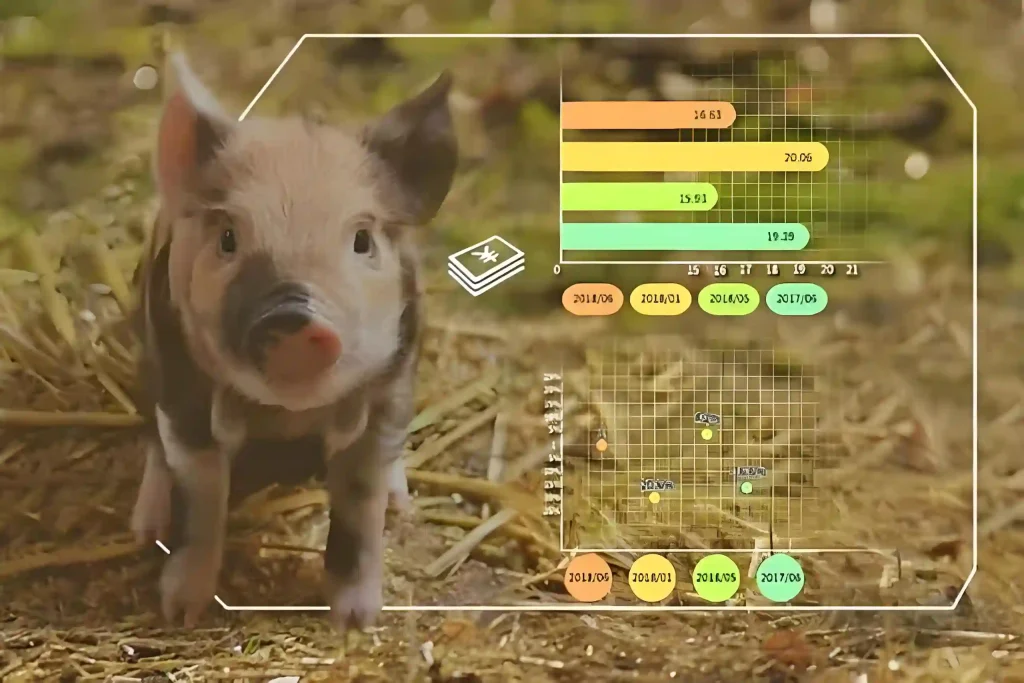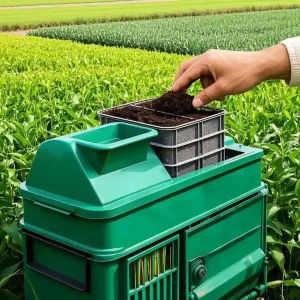In 2025, the global agricultural AI market is approaching a $100 billion valuation, with China’s farmlands undergoing an unprecedented revolution. From fully automated rice harvesting in Guangdong’s unmanned farms to Zhejiang’s “digital gardeners” grafting solanaceous plants at a rate of one per second, AI is silently reshaping every facet of agricultural production. This isn’t just a disruption to traditional farming models – it’s a complete redefinition of the outdated “agriculture = backwardness” stereotype. With pest detection accuracy surpassing human eyesight and pig facial recognition creating digital identities for livestock, agriculture has become the new frontier for global tech giants.
I. Technological Revolution: How AI is Leading Agricultural Transformation
1. Pest & Disease Management: From Reactive Response to Proactive Prevention
Traditional agriculture relied on experiential judgment for pest control, but AI now enables early detection at the “incubation stage.” For example:
- In a Guangdong pilot farm, drones capture daily high-definition field imagery. Combined with soil sensor data, AI models identify early-stage insect eggs and leaf lesions with 92% accuracy. The system auto-generates treatment plans and coordinates pesticide drones, reducing chemical use by 30% and pest-related losses by over 50%.
- At Zhejiang’s Linping Future Farm, 300+ environmental sensors feed real-time data into a predictive model that forecasts disease outbreaks 15 days in advance. Farmers receive tailored recommendations via mobile apps, effectively placing “agricultural experts” in their pockets.
2. Pig Facial Recognition: Smart Livestock Management

In a Sichuan smart pig farm:
- Each piglet receives a lifelong “biometric passport” through facial recognition at entry. The system tracks body temperature fluctuations, feeding patterns, and movement in real-time.
- Early disease detection (90% accuracy) cuts feed waste by 18%, shortens slaughter cycles by 7 days, and reduces per-head costs by ¥140.
- Blockchain integration in Shandong’s “Qilu Agro-Commerce” platform allows consumers to trace pork products from farm to table, boosting premium pricing by over 20%.
3. Ecosystem Reinvention: AI-Driven Agricultural Metaverse
- Robotic Labor: Zhejiang’s robotic grafting systems achieve 99% survival rates for solanaceous crops at one graft per second. AI shrimp counters tally 3,000 larvae in 10 seconds with 0.1% error.
- Drone Revolution: XAG’s agricultural drones expanded beyond spraying to full-cycle operations (seeding, pollination), covering 300 million mu (≈20 million hectares) in 2025 – equivalent to redeveloping China’s Northeast Plain.
II. Policy & Capital: Twin Engines of Agricultural AI
1. Government Strategy: From Local Pilots to National Agenda
- The 2025 Central Committee’s No.1 Document officially elevated agricultural AI to a national priority, calling for expanded AI and low-altitude tech applications.
- Ministry of Agriculture plans ¥20 billion investment in digital infrastructure over three years. Provinces like Shandong and Guangdong offer 30-50% subsidies for AI equipment purchases.
- Sichuan’s Shuangliu District created a “5G + digital agriculture” platform integrating farming, telemedicine, and microfinance, benefiting 100,000 rural households with 40% governance efficiency gains.
2. Industry Collaboration: Tech Titans & Agricultural Giants
- Strategic Partnerships:
- Longping High-Tech (agricultural biotech) teamed with Huawei to develop an open-source agricultural operating system, achieving 15-20% yield increases.
- DJI dominates 70% of the global agricultural drone market with multi-functional solutions.
- Investment Boom: Sequoia Capital and Hillhouse Capital led over ¥10 billion in funding for smart machinery and bio-data analytics, driving industry consolidation.
III. Challenges & Opportunities: Navigating the AI Frontier
1. Digital Divide: Last-Mile Accessibility
- While eastern provinces showcase unmanned farms, central/western regions face connectivity gaps and high costs (e.g., ¥500,000 robotic grafting systems). Sichuan’s Liyuan Village pioneered a collective leasing model to reduce farmer entry barriers.
2. Data Sovereignty: Protecting Critical Information
- 80% of Chinese agricultural cloud platforms still rely on foreign tech. Longping High-Tech’s domestically developed operating system addresses this by securing data at the code level, requiring future regulatory frameworks to clarify data ownership.
3. Workforce Transformation: Reskilling for the Digital Age
- Only 12% of farmers can use agricultural apps proficiently. Solutions include:
- University-enterprise partnerships for “smart agriculture” degree programs
- User-centric interface designs to lower adoption thresholds
IV. Future Vision: Agriculture’s Metaverse Era
The convergence of AI and biotechnology is creating an “augmented reality” for farming. As China transitions from agricultural modernization to intelligent transformation, the integration of AI, IoT, and blockchain will redefine productivity, sustainability, and consumer trust – positioning agriculture as a cornerstone of the Fourth Industrial Revolution.
More:
- 2025: The Year Agriculture Enters the AI Era – A New Wave of Transformation on the Horizon IAgricultural AI Revolution
- Algarikon Zero Project: How a Spanish Firm Transforms Invasive Algae for Edible Mushroom Cultivation
- 🔍 Research Uncovers Key Mechanisms of Morel Strain Degradation
- Spain: Edible Mushrooms Found to Alleviate the “Salty” Dilemma of the Meat Industry
- Yunnan’s Morel Mushroom Industry: Current Status and Prospects


